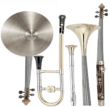5.1 Segment analysis
A segment analysis involves the examination of the aforementioned segment in Chapter 3, combining texture analysis and orchestration methods to reveal the contribution of individual instruments to the orchestration. The analysis identifies the underlying texture (discussed in Chapter 2) and the orchestration methods used (covered in Chapters 3 and 4).
In segment analysis, a texture with two elements, such as a melody with accompaniment, is treated as two segments. These segments are named based on their depth position in the sound picture (see Chapter 3). If the segments are considered to be placed side-by-side in the sound picture, they are labeled Segment A and Segment B (henceforth just A and B). If the segments are interpreted as being positioned one in front of the other, they are labeled Segment 1 (in front) and Segment 2 (behind; henceforth just 1 and 2).
Segment analysis typically involves three steps: First, identifying a segment during which a fixed instrument distribution is present (refer to Section 3.2); Second, determining the number of textural elements in the selected segment and labeling them with numbers or letters based on their mutual position in the sound picture; Third, describing the orchestration methods of each element.
5.2 Segment analysis exemplified
The first fixed instrument distribution in the opening of the 2nd movement from Tchaikovsky’s Symphony No. 6 is the segment from bars 1 to 8 (Figure 46).
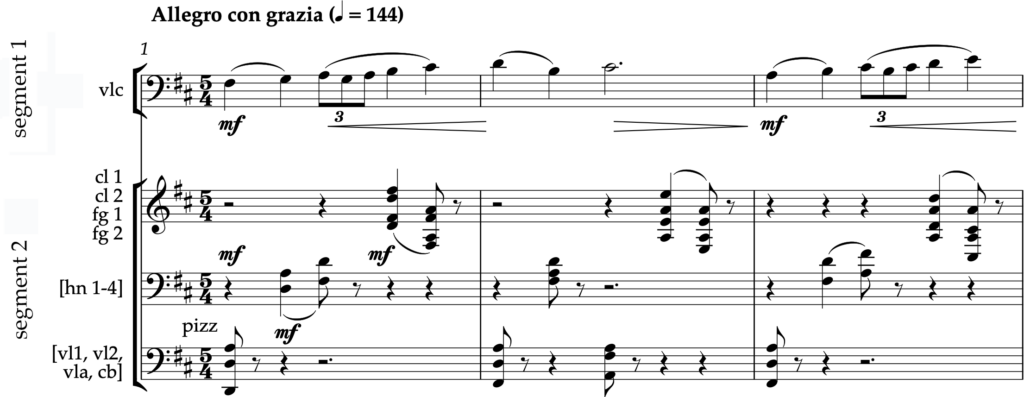
Figure 46. Tchaikovsky’s Symphony No. 6, 2nd movement
In this section there are two elements: a melody and an accompaniment, which in the segment analysis are named 1 (melody) and 2 (accompaniment), since 2 is considered to appear behind 1. As we have already established earlier, 1 employs linear orchestration, played by the cellos in their middle register, while 2 employs split orchestration with rapid shifts without overlapping notes between strings, horns, and woodwinds. This accompaniment spans approximately three octaves encapsulating the range of the central cello melody.
In table format, this segment analysis would look like Figure 47.
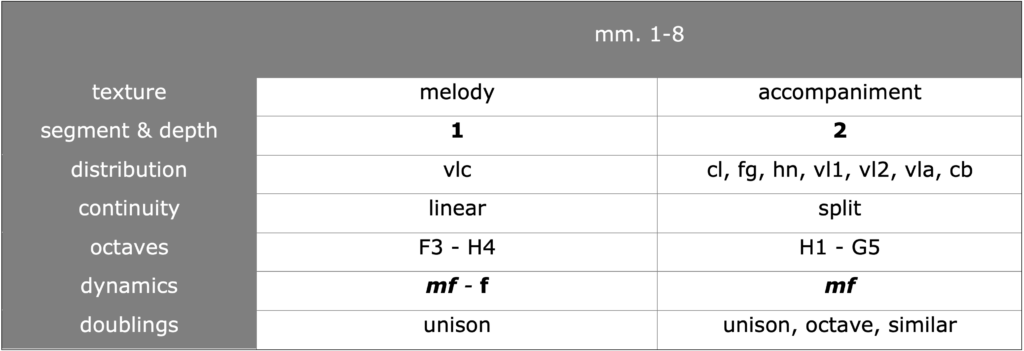
Figure 47. Segment analysis of mm. 1-8 from Tchaikovsky’s Symphony No. 6, 2nd movement.
That segment analysis is largely an interpretation, a matter of how the score is read, is demonstrated by conducting two different segment analyses of Sciarrino’s 4 Adagi, 1st movement mm. 11-13.
In this first analysis the texture are seen as consisting of one singular element (the recorder) and two compound elements that are placed five octaves apart. The two compound elements are interpreted as placed behind the singular element. Therefore, they are named 2A and 2B.
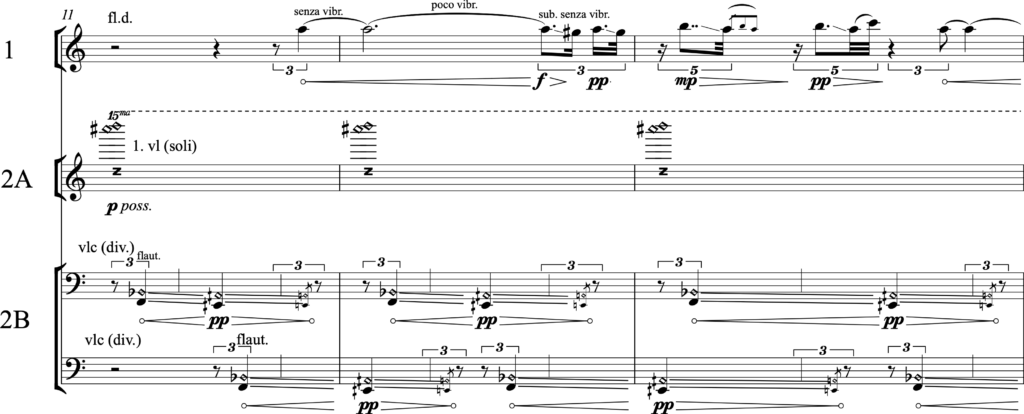
Figure 48. Sciarrino’s 4 Adagi, 1st movement. Two composite elements, 2A and 2B, are mutually coordinate, but subordinate to the singular element, 1.

Figure 49. Segment analysis of Sciarrino’s 4 Adagi, 1st movement, mm. 11-13. Notice that 2A is played by two soloists from the first violins, while the violoncelli in 2B are played by the cello section (div.), coursing unison doubling.
In this second analysis of the same segment, the texture is seen as consisting of three singular elements. In this interpretation, 2A is now viewed as an interval-displaced singular element, and 2B is considered a temporally displaced singular element. Consequently, the analysis would look like this (Figure 50)

Figure 50. Alternative segment analysis of Sciarrino’s 4 Adagi, 1st movement, mm. 11-13.
5.3 Segments and sub-segments
A segment can be divided into two or more sub-segments, when the segment includes several different voices – not counting any type of doublings as different voices. The purpose of subsegmentation is to clarify the orchestration methods in use. If a segment consists of two or more sub-segments, the sub-segments are indicated with a period followed by either a number (1.1) or letter (1.a). If numbers are used, the subsegments are placed behind each other, if letters are used, they are placed at the same level in the sound picture. A segment named 4.c, for example, is a subsegment that has the same depth position as 4.a and 4.b. Together, the three subsegments 4.a, 4.b, and 4.c form segment 4which is placed behind segment 1, 2, and 3.
In Figure 51, which we previously interpreted as a melody with accompaniment, both the melody and the accompaniment can be divided into subsegments, as both segments consist of several voices.
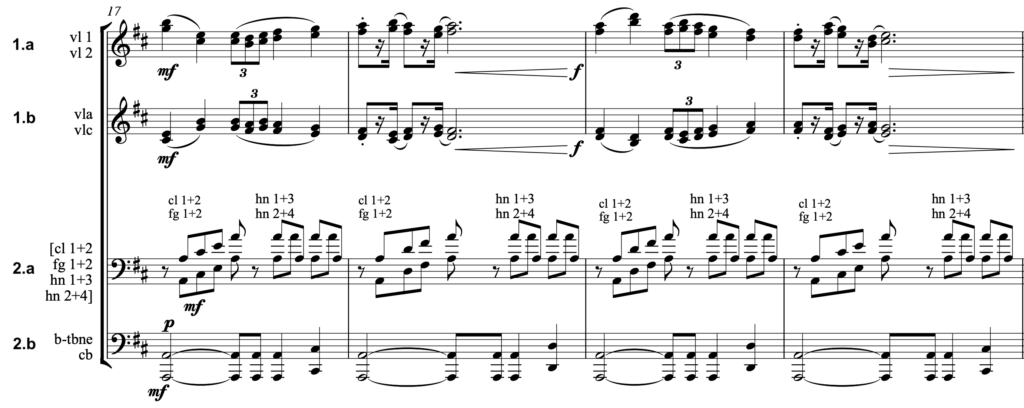
Figure 51. Tchaikovsky’s Symphony No. 6, 2nd movement. Segment 1 is the sum of 1.a and 1.b, and segment 2 is the sum of the two subsegments, 2.a and 2.b.
The melody and its inversion might look as two different textural elements (each doubled in parallel motion by thirds), but they are not mutually independent. They are tied together by the same rhythm and consistently opposing contour, and they are therefore analyzed as one segment, 1. But since it consist of to different voices it can be subdivided into two subsegments, 1.a and 1.b, at the front of the sound picture.
The accompaniment, 2, also consists of two different voices (both using octave doublings) and therefore analyzed as two sub-segments, 2.a and 2.b, placed behind segment 1 (Figure 52).

Figure 52. Segment analysis of Tchaikovsky’s Symphony No. 6, 2nd movement, mm. 17-20.
Subsegmentation makes it possible to describe the use of multiple orchestration methods in a single segment, as in Figures 47-48 where 2.a uses split orchestration whereas 2.b uses linear orchestration.
An even more complicated and clearly constructed orchestration is revieled with Figure 53 and 54. The example consist of two segments: an accompaniment-like segment (A) and a melodic ostinato in the bass (B), where A is a compound element and B is a singular element. Normally, an accompaniment will be subordinate to a melody, but in this excerpt, the accompaniment attracts as much attention as the melody. Partly because of the development in the accompaniment, its placement above the melody, but also the fact that, at this point, the melody has already been repeated several times in unchanged form. Therefore, the segments are considered to be coordinate which is why they are listed as A and Bsegments.
A is made up of two sub-segments, of which A.1 is considered dominant as it is placed in a higher range and is accentuated. A.1 consist of two layers of partial doublings (adding accent and reverb), whereas, as earlier shown (Figure 40), A.2 is a doubling by contour. The B segment also described earlier in relation to figure 27, is a partial doubling.

Figure 53. Segments in Ravel’s Rapsodie Espagnole, 2nd movement.
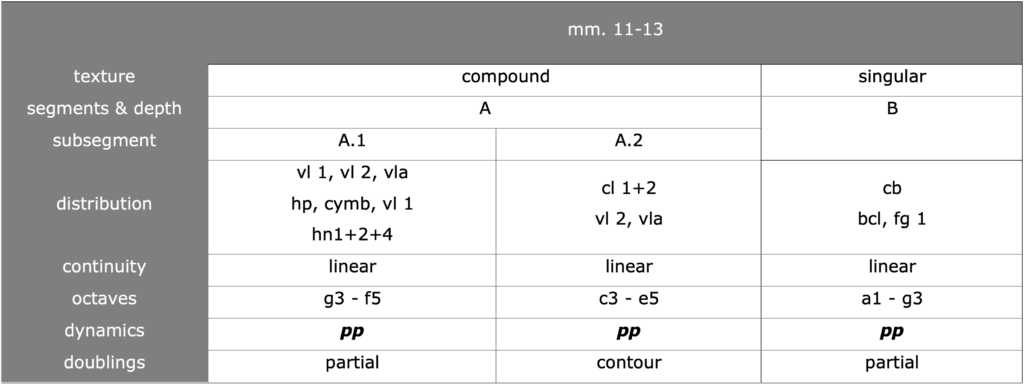
Figure 54. Segment analysis of Ravel’s Rapsodie Espagnole, 2nd movement, mm. 11-13.
This rather complicated segment analysis discloses the construction of this excerpt of Ravel’s orchestration. It clarifies how each individual instrument participates in the realization of the textural elements in a way that adds specific sensuous qualities to the music, such as accentuation, timbral colors, reverberation etc.
Notice that the analysis of distribution, continuity, octaves, dynamics, and doublings is done at the level of subsegments whenever possible.
5.4 Summary
A segment is a section with an, ideally, fixed instrument distribution. Within a segment, texture analysis is combined with orchestration methods. Each textural element is named in the order in which they are interpreted to appear in the depth of the sound picture, using numbers when segments are at different depth level and letters when they at at the same level. Naming decisions are primary based on assessments of types of textural elements, activity level and dynamics. Three segments can be organized in the four relations indicated in Figure 55.

Figure 55. The four ways that three segments may be organized in relation to each other: (a) A, B, and C all at the same position of depth; (b) 1A and 1B at the front, and 2 behind; (c) 1 at front with 2A and 2B behind; (d) 3 behind 2 behind 1.
Segments can be divided into subsegments. The purpose of this is to clarify the use of different orchestration methods on the level of subsegments.
When a segment is divided into sub-segments, it is marked with a period in its name. The mutual relations of subsegments are indicated with numbers and letters following the same strategy as for segments. When subsegments are used the analysis of the applied orchestration methods are done at this level.
